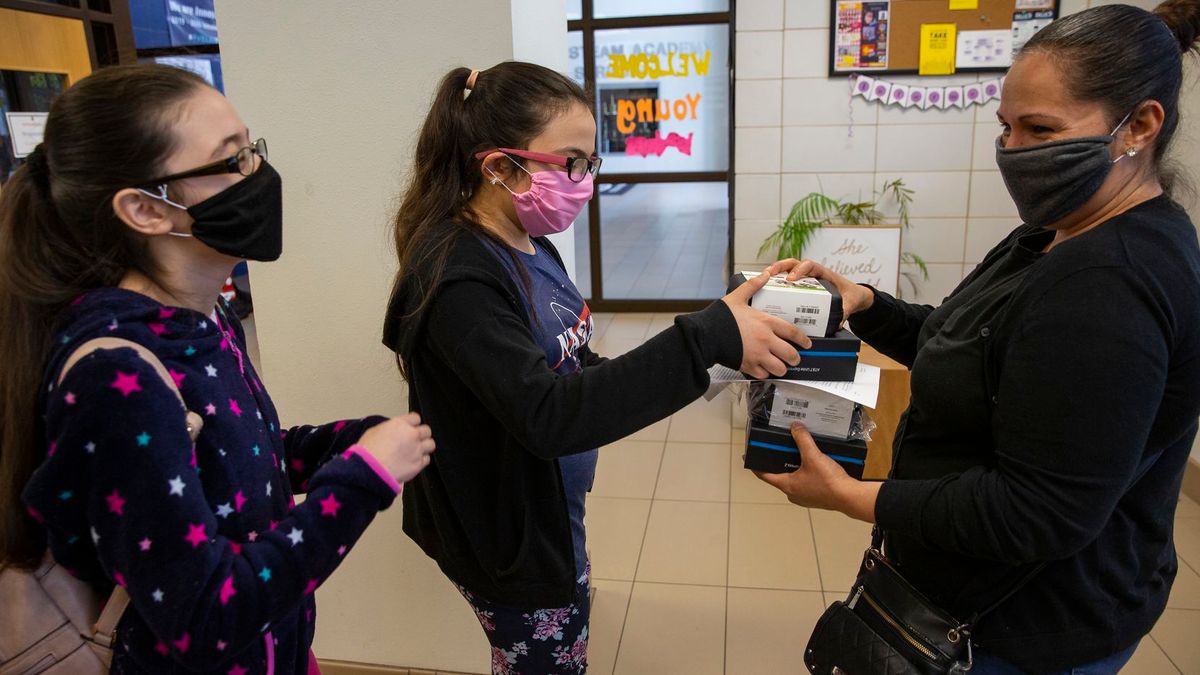Should American schools reopen in the fall?

A few minutes every morning is all you need.
Stay up to date on the world's Headlines and Human Stories. It's fun, it's factual, it's fluff-free.
As the number of new coronavirus cases reaches all-time highs in the United States, recently surpassing 60,000 confirmed cases per day, the Trump administration appears to be planning on pushing for the full reopening of schools in the fall.
In many school districts, classes would ordinarily resume in mid-to-late August, a little over a month from now.
On July 7, President Trump tweeted, in all caps, that “schools must reopen in the fall,” later arguing that Germany, Denmark, Norway and Sweden, among other countries, were reopening schools “with no problems.” He also threatened to withhold federal funding from districts that fail to reopen.
While several European countries have sent students back to schools in various contexts over the past several months, some are pushing back against Trump’s claims, especially given that those countries have managed to control the virus more successfully within their borders.
“We took the initial hit to our economy and the hard blows, and now we are seeing the benefits with things like the reopening of schools, so that’s where the comparison is wrong,” remarked Niels Larsen, a resident of Copenhagen, Denmark.
In Sweden, a country in Europe that has received criticism over lax virus precautions, the total number of confirmed cases is just over 76,000, a mark the US has come close to matching on numerous days over the past week.
Views from health experts
Betsy DeVos, the US Secretary of Education, recently told Fox News’ Chris Wallace that “there’s nothing in the data that suggests that kids being in school is in any way dangerous” and that children contract the virus at much lower rates than adults.
According to the Mayo Clinic, a leading US hospital, although children rarely become severely ill due to the virus, it’s still unclear why children are less affected.
Likewise, it’s still possible that children spread the disease to others, potentially adding to increased infection rates among the broader population.
For this reason, some argue that the issue deserves more consideration, especially in the context of reopening schools.
As for the Trump administration’s threat to withhold funding if schools don’t reopen, Tom Ingelsby, the director of the Center for Health Security at the Johns Hopkins Bloomberg School of Public Health, argued that ultimatums were the wrong approach.
“There are going to be many challenges to opening schools safely and just kind of asserting that schools now must reopen safely doesn’t make it so,” Inglesby said. According to internal Centers for Disease Control and Prevention (CDC) documents obtained by The New York Times, fully reopening K-12 schools and universities remained the “highest risk” for spreading the coronavirus.
That said, the CDC did release recommendations on opening schools earlier this year, which included the use of face coverings, staggered arrival and drop off times and modified classroom layouts, including setting up physical barriers.
President Trump has criticized the recommendations as “very tough and expensive.”
Mixed reactions from GOP
While many Democrats disagree with the administration over its handling of the issue, some linked with conservative political causes have also pushed back.
“Threats are not helpful. We do not need to be schooled on why it’s important to reopen,” said Joy Hofmeister, a Republican state superintendent of public instruction in Oklahoma.
“Educating our kids shouldn’t be about politics — it’s about focusing on what’s needed,” she added.
Others feel the administration is making the correct decision in pushing for schools to reopen.
“If you don’t have school come this fall, the kids that were typically going to school from K-12, who’s going to be watching them? What are we going to do in regard to the daycare needs there?” asked Tom Reed, a Republican in the US House of Representatives from New York.
Reed did, however, criticize the Trump administration for its heavy-handed tactics on the issue.
“I caught the governor’s [Cuomo’s] comment that opening the schools is not the president’s choice – that’s true,” Reed said, adding that it should be up to school districts and local municipalities as to whether they feel it’s appropriate to reopen schools, not the federal government or the state.
“That is a local determination, but it’s not a state determination,” he added.
Political concerns?
President Trump’s bid to reopen schools could be a part of a broader political strategy to boost his support with suburban voters.
According to unidentified sources close to the Trump campaign, the move amounts to an attempt from the president to paint himself as the candidate of “public safety and social and economic stability.”
In the November election, suburbs in key battleground states like Pennsylvania and Wisconsin could prove to be meaningful demographics to secure support with. A recent Reuters/Ipsos poll, however, shows the uphill battle Trump might have in those places as the election nears.
In early July, just 36% of suburban voters in the poll said they approved of President Trump, while 59% said they disapproved.
Have a tip or story? Get in touch with our reporters at tips@themilsource.com




Comments ()